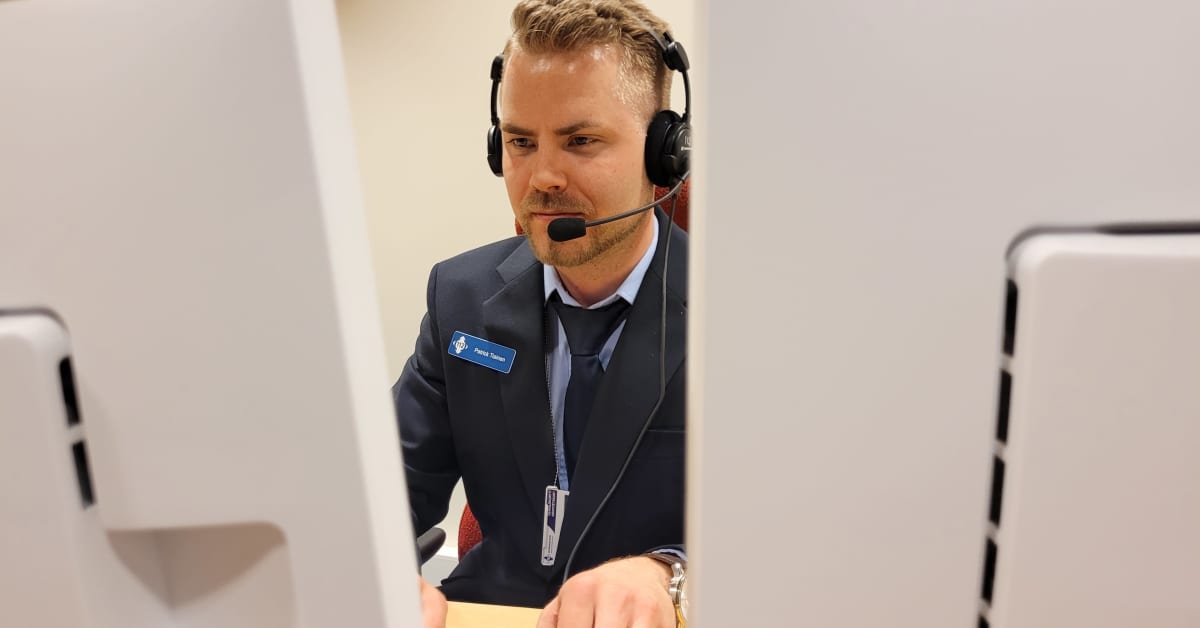Video calling to emergency service dispatchers is not yet possible anywhere in the world, but Finland is aiming to find out if it could be done.
Prime Minister Petteri Orpo’s (NCP) government programme, calls for looking into the possibility of using video calls to reach emergency services.
The use of video could give emergency service experts a better idea of the situation at hand, but there would be a few hurdles to cross before such a system could be implemented.
What kind of platform that could be used is still an open question, as commercial video conferencing apps like FaceTime and WhatsApp would most likely be off the table, due to concerns including data security.
According to EU rules, eventual video calls to emergency services would be obligated to have the video feature on both ends — the caller and the dispatcher. But due to security issues, emergency services centres have not been equipped with video conferencing tech.
According to Arttu Perttula, director of the Emergency Response Centre Agency’s development department, there are other possible impacts that video calls could have on emergency services staff.
“For us, staff job satisfaction is very important. The use of video and images [in 112 calls] could possible pose new challenges in that the images could be even more burdensome and traumatising than traditional phone calls,” Perttula explained.
Using video chats would also raise questions about data security, as the privacy of callers needs to be insured, he noted.
“From a technical point of view, we have to record all calls. If we start using video, the recordings would take up quite a bit of [computer] storage space,” Perttula pointed out.
According to an EU directive on the matter, an emergency video call system would also need to have the option of text input in real time, a feature which is expected to be put in use alongside the current voice-based telephone arrangement.
Finland is already piloting an emergency services video calling system as an accessibility feature for people who use sign language and their interpreters.
eventual video calls to emergency services would be obligated to have the video feature on both ends
Don’t understand this restriction. Anyone knows why it have it?
Unobstructed camera can be looked through if you’re not secured enough (governments and state agencies often aren’t).
Sorry, don’t understand what you mean.
Interesting and useful in certain situations for sure, my only concern is the workers well being. It’s rough enough hearing a person panicking over the phone and it’s another thing entirely to witness an emergency situation in real time. Trauma therapy is going to need to be mandatory if it isn’t already for this sort of thing.
The other potential is the use of video/questioning operators over video evidence taken during and emergency call. I’d say as a whole this is a good move that does open a couple extra doors of caution.
Wow a lot of spicy (bad) takes in these comments
What happens when someone needs to call emergency services and pretend that they are calling the pizza place because their spouse is threatening to beat them or worse? Can’t really fake it if the video connects to a dispatcher and not some pimply teen in a pizza store.
You just make a regular phone call…
According to EU rules, eventual video calls to emergency services would be obligated to have the video feature on both ends — the caller and the dispatcher.
“Obliged” means “required”
Then why have a second type of service if the phone call works fine? Seems like a waste of money just to have something fancier when the old tech is perfectly acceptable.
Because not every emergency is going to be one where video calling is a bad idea. The idea is to have an option where it can accelerate the transfer of information to the authorities. This is not that complicated.
If the old system works why change it? Video doesn’t add anything that you can’t describe by voice. Plus with the addition of video now you get to treat dispatchers with PTSD since they now get to see all the trauma as well as hear it.
Video doesn’t add anything that you can’t describe by voice.
Have you never tried to talk someone through doing something over the phone? It’s incredibly slow if you can’t see what they’re doing, and you can’t see if they’re doing it right or not.
I work as a systems administrator. My job is to explain things over the phone while I can’t see them. It’s not slow at all. And how would that help the dispatcher? He’s gonna mime some shit to someone to do? He’s going to make shadow puppets? I cannot imagine any use case where video would help emergency dispatchers. Please enlighten me.
So do I. You’re telling me you’ve never had someone try to describe a cable or read an error code over the phone and completely mangle it?
A video would let them say “yeah, that looks like a stroke” or heart attack or whatever. Or notice things the caller didn’t describe, like they’re calling for someone they found unconscious, but they didn’t notice the live power line right next to them.
Some people lack comprehensive explanations, especially when stressed. Video calls can help get a view of what is going on without guessing what the caller means.
People can still call, video is not mandatory. It’s an extra means of assistance.
So people without video phones, or who can’t use video phones, can’t call emergency services.
No, how could you possibly come to that conclusion?
According to EU rules, eventual video calls to emergency services would be obligated to have the video feature on both ends — the caller and the dispatcher.
“Obliged” means “required”
It says “feature,” not that every call has to be a video call, its just that they need to have it as an option available.
Pretty sure the standard option would remain as well.
However, given that almost everyone is on a smartphone here and hopped up on a cheap unlimited data plan, it’s pretty accessible for 99%.
99% isn’t good enough for emergency services. Also, sometimes, video is too dangerous.
That’d be like saying 911 isn’t good because not everyone has a phone.
Again, it is an additional and optional service on top of the usual phone call. So those who have any old phone in hand will still have access. Just no video.
No, voice calls including POTS calls will stay. This would be additional. For second point this is a very big may or if. They are pretty much just studying the possibility, maybe doing a pilot project at some point. Any showstoppers or big obstacles show up, this would abandoned quickly.
Far more important and already implemented is reporting of the callers mobile phones locations via an official emergency call app. Also emergency center can get the cell network triangulation location, but often in rural Finland it might end up being “anywhere on this towers coverage area”. Amounting to anywhere on this tens of square kilometers circle. So say somewhere in vinicity of this village, maybe.
The call app can get direct phone GPS receiver access and thus down to meters location.
Doesn’t seem to be what the article says:
According to EU rules, eventual video calls to emergency services would be obligated to have the video feature on both ends — the caller and the dispatcher.
“Obliged” means “required”
Obligated to have the video feature. Meaning all phones would eventually be required to have the capability to use it, it would still be optional for the caller to allow it. Like how where I am we have the options of calling or texting 911.
No, it means that if a video service is implemented, it has to have video on both ends.








